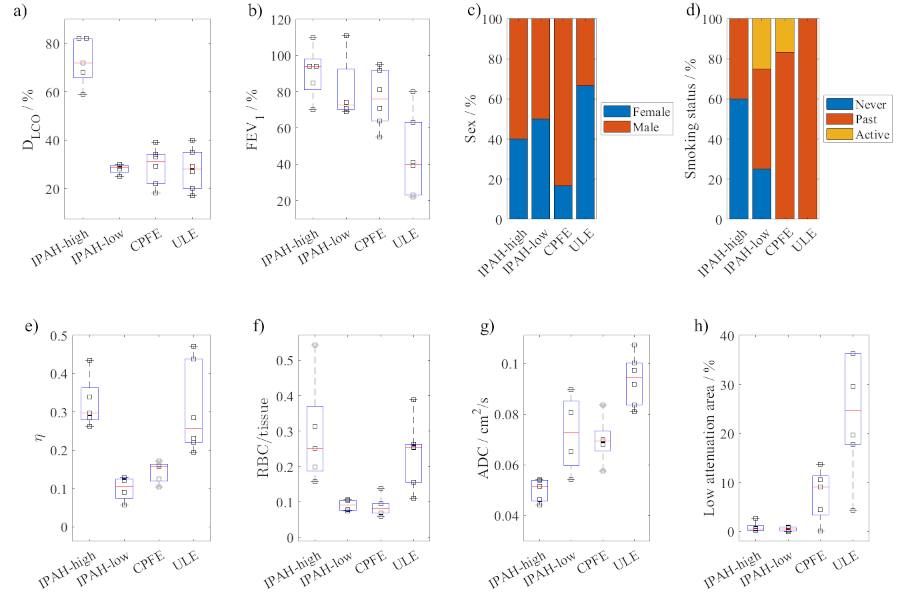Abstract
Introduction
Previous studies suggest that IPAH consists of several phenotypes, some of them defined by higher/lower DLCO (IPAH-high/low) and less/more frequent smoking history in the absence of parenchymal lung disease apparent on CT.
Aims and objectives
Aim was to evaluate 129Xe uptake to capillaries in patients with IPAH-high/low to test the hypothesis of loss of small pulmonary vessels in IPAH-low, to evaluate alveolar microstructure and to compare results to patients with combined pulmonary fibrosis and emphysema (CPFE) and upper-lobe emphysema (ULE).
Methods
Patients underwent 129Xe MRI and CT. The 129Xe in red blood cells (RBC) fraction ? in diffusional equilibrium and the RBC/tissue ratio were assessed from chemical shift saturation recovery and high-resolution spectra. 129Xe gas diffusion imaging and CT data were used to calculate apparent diffusivity (ADC) and low-attenuation area percentage (<?950HU, LAA%).
Results
21 patients with IPAH-high/IPAH-low/CPFE/ULE (5/4/6/6) were included. ? and RBC/tissue were significantly reduced in IPAH-low compared to IPAH-high. ADC was significantly increased but LAA% was not (Figure).

Conclusion
Reduction of ? and RBC/tissue is consistent with a loss of functional pulmonary capillaries in IPAH-low. Alveolar microstructure destruction must be considered as contributing factor as evidenced by elevated 129Xe ADC, which seems more sensitive for emphysema than LAA%.